Abstract
An acidic polysaccharide (PS) of Serratia piscatorum enhances the IgM PFC responses against heterologous erythrocytes in mice. Early and late IgM responses were increased significantly by increasing the number of immunizing erythrocytes and the dose of PS, whereas the IgM PFC response was suppressed by higher dose of PS and antigen. A stimulatory doses of PS significantly increased the secondary IgM and IgG responses against sheep erythrocytes. PS restored the reduced PFC response against sheep erythrocytes in adult-thymectomized, 60Co-irradiated and bone marrow-transferred mice (ATXBM) and nude mice (nu/nu), and thus the stimulatory effect of PS appeared greater in immunologically impaired mice than in normal ones. Spleen cells taken at the time of the peak PFC response from mice treated with higher doses of sheep erythrocytes and PS, suppressed the primary IgM production of normal syngeneic spleen cells against sheep erythrocytes in vitro. The suppressing activity of the spleen cells was increased by prior treatment with anti-theta serum and complement, while it was reduced by treatment with anti-mouse Ig serum and complement. These results suggested that immunoglobulin-bearing cells may have a role on the suppressing activity of spleen cells.
Full text
PDF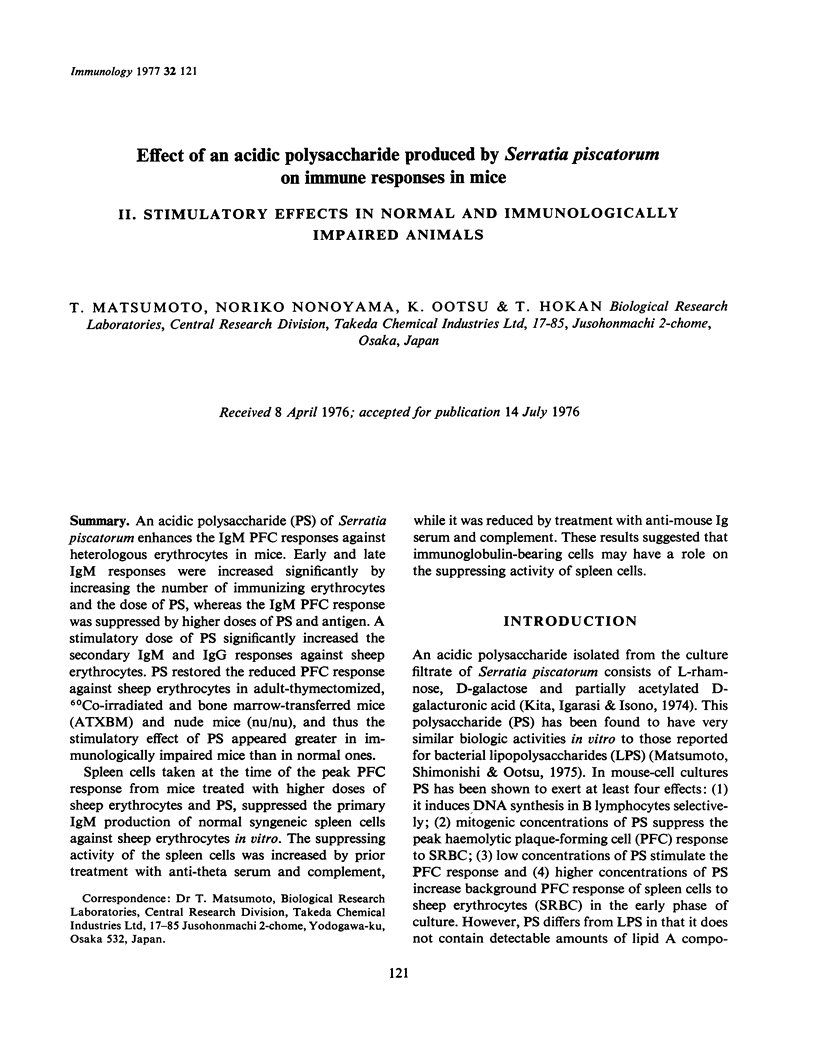
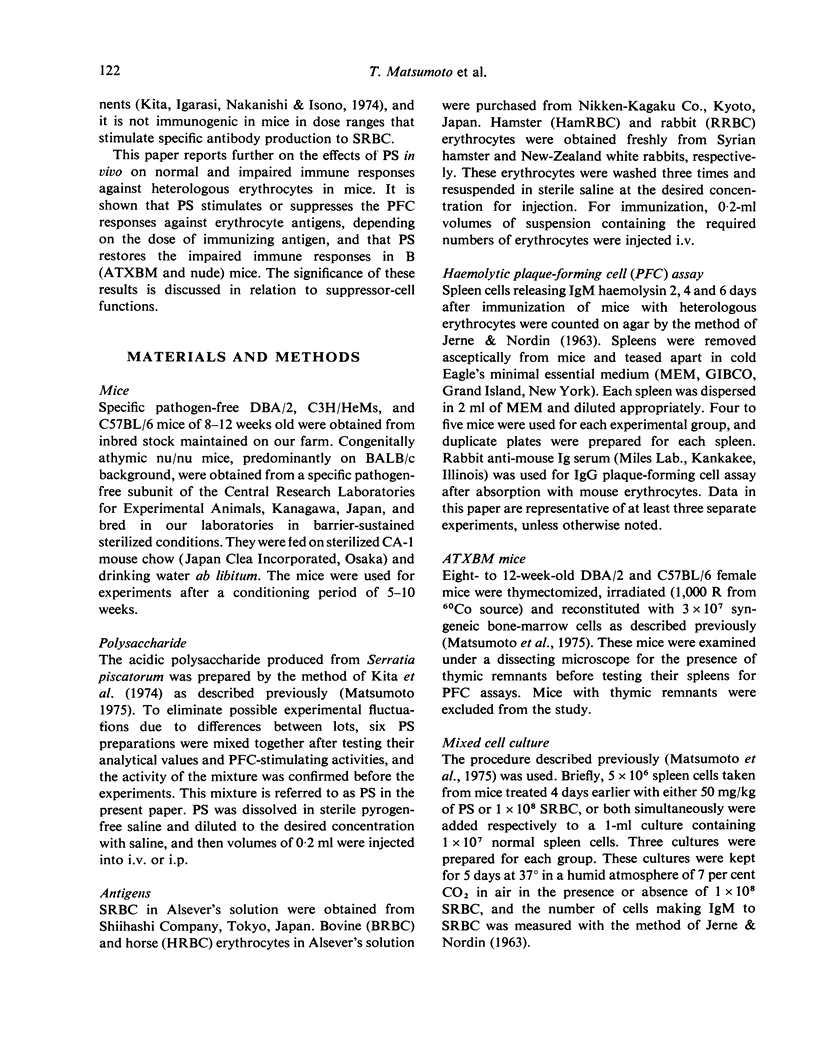

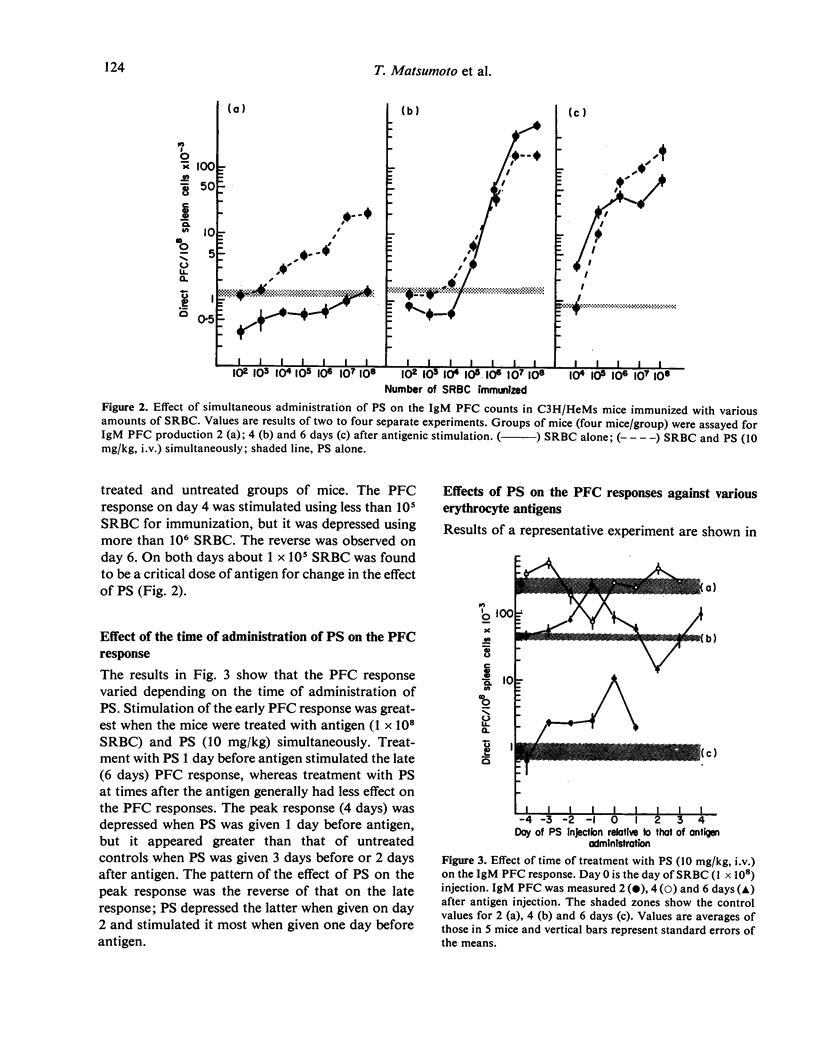

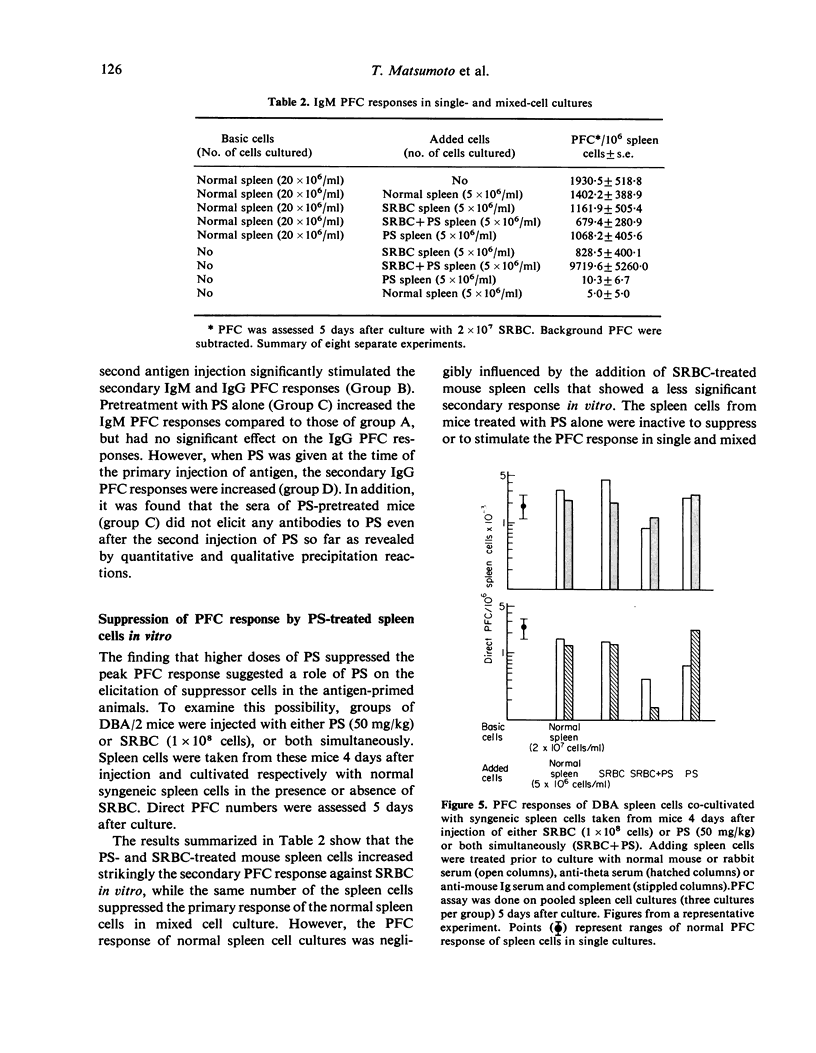
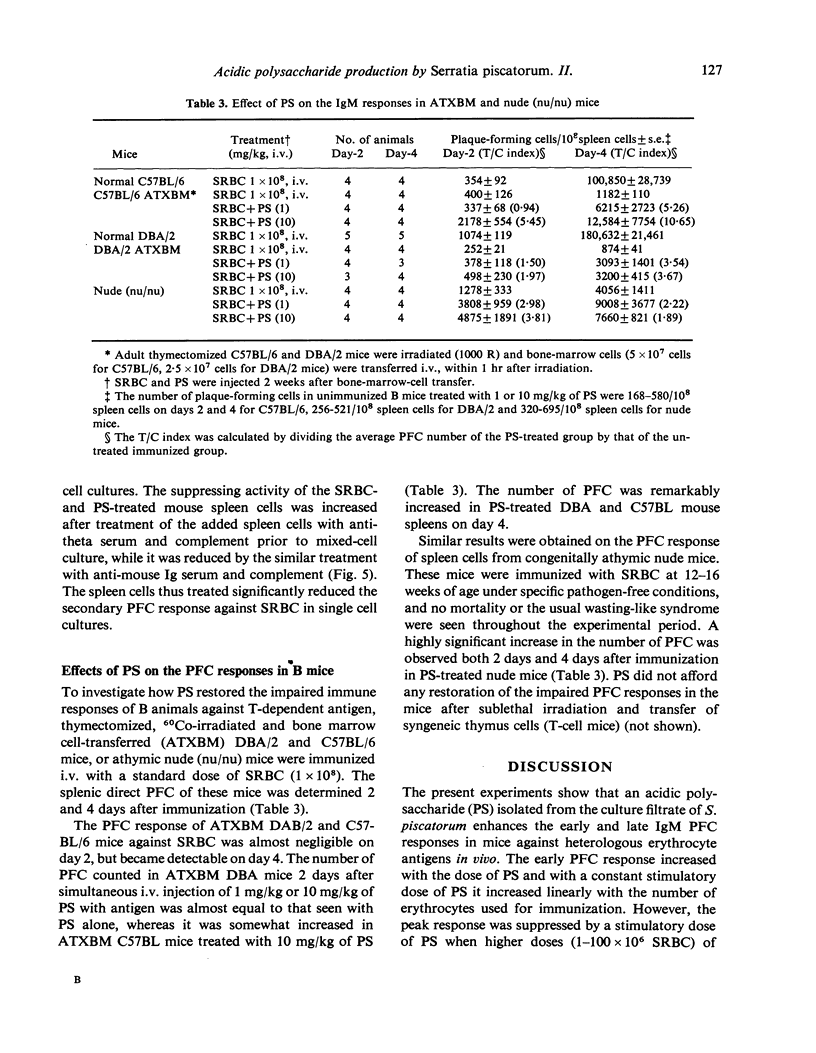
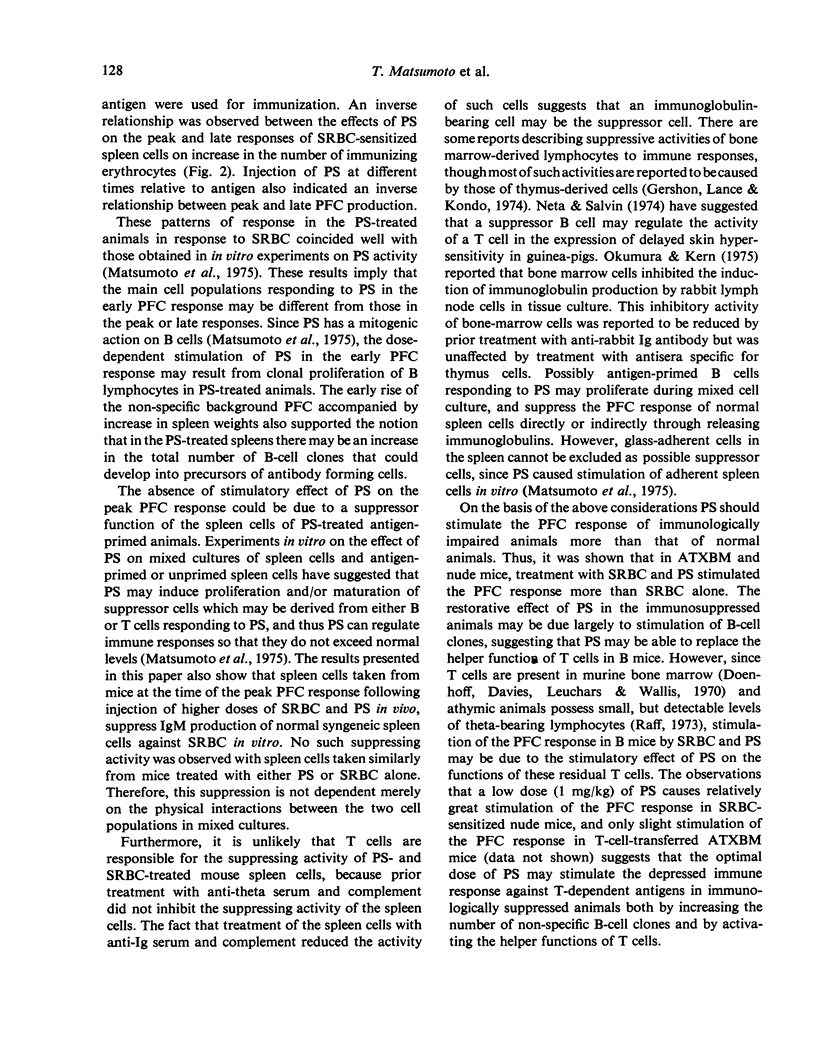

Selected References
These references are in PubMed. This may not be the complete list of references from this article.
- Gershon R. K., Lance E. M., Kondo K. Immuno-regulatory role of spleen localizing thymocytes. J Immunol. 1974 Feb;112(2):546–554. [PubMed] [Google Scholar]
- Jerne N. K., Nordin A. A. Plaque Formation in Agar by Single Antibody-Producing Cells. Science. 1963 Apr 26;140(3565):405–405. doi: 10.1126/science.140.3565.405. [DOI] [PubMed] [Google Scholar]
- Kita Y., Igarasi S., Isono M. Chemical structure of an acidic polysaccharide produced by Serratia piscatorum. Carbohydr Res. 1974 Dec;38:239–246. doi: 10.1016/s0008-6215(00)82354-x. [DOI] [PubMed] [Google Scholar]
- Matsumoto T., Shimonishi C., Ootsu K. Effects of an acidic polysaccharide procuced by Serratia piscatorum on immune responses in mice. I. mitogenicity and stimulation of plaque-forming cells (PFC) in vitro. J Immunol. 1975 May;114(5):1574–1580. [PubMed] [Google Scholar]
- Neta R., Salvin S. B. Specific suppression of delayed hypersensitivity: the possible presence of a suppressor B cell in the regulation of delayed hypersensitivity. J Immunol. 1974 Dec;113(6):1716–1725. [PubMed] [Google Scholar]
- Raff M. C. Theta-bearing lymphocytes in nude mice. Nature. 1973 Dec 7;246(5432):350–351. doi: 10.1038/246350a0. [DOI] [PubMed] [Google Scholar]


